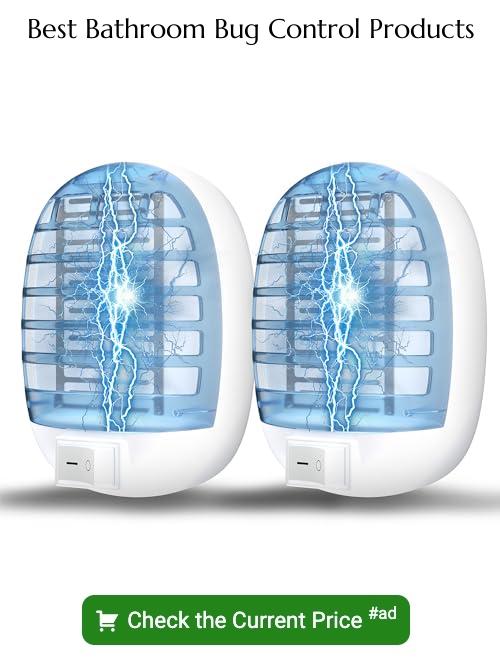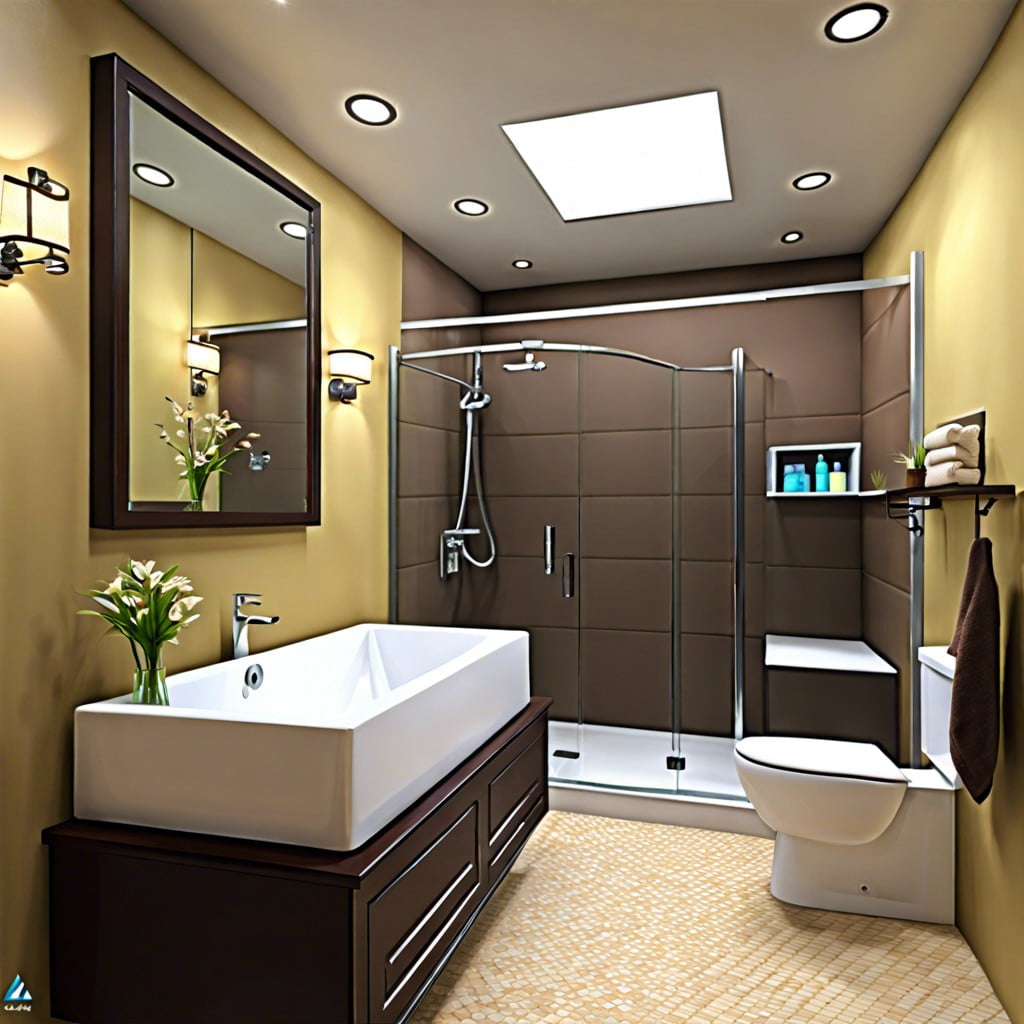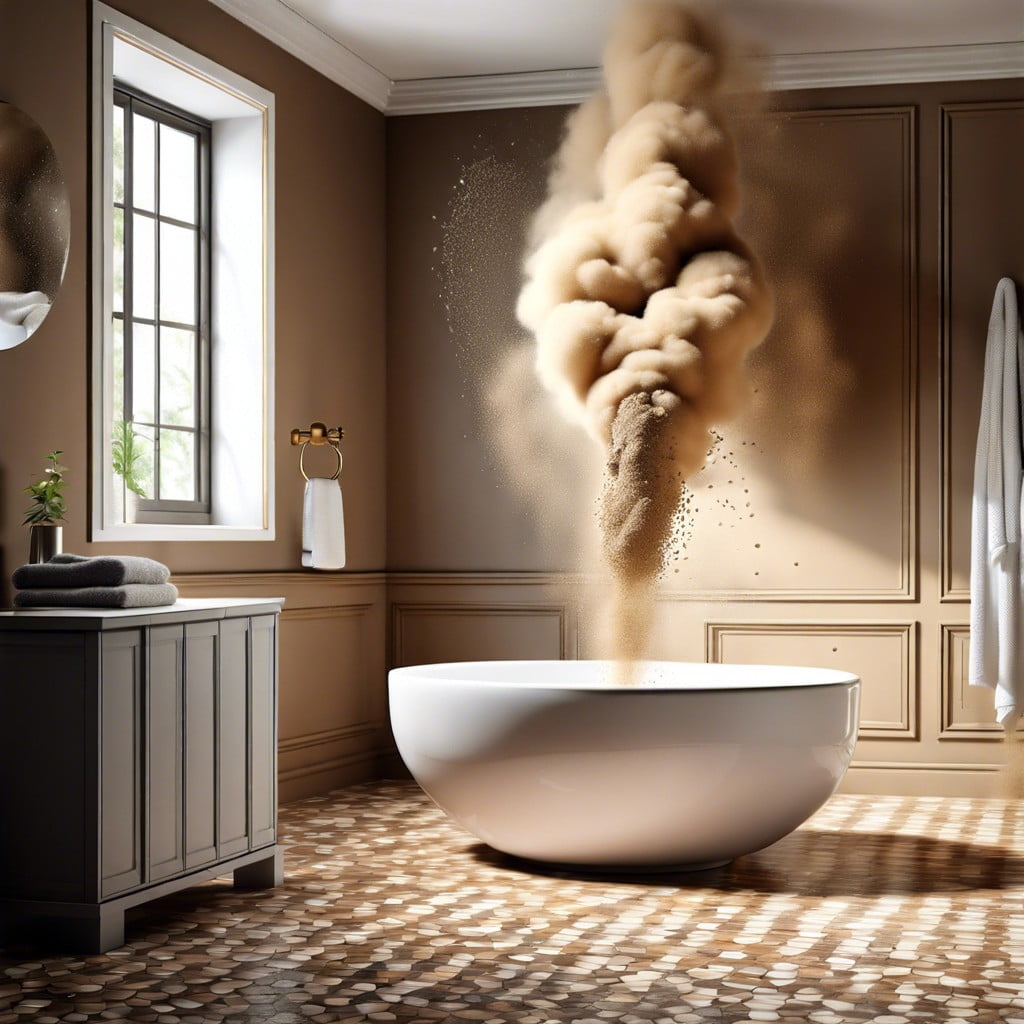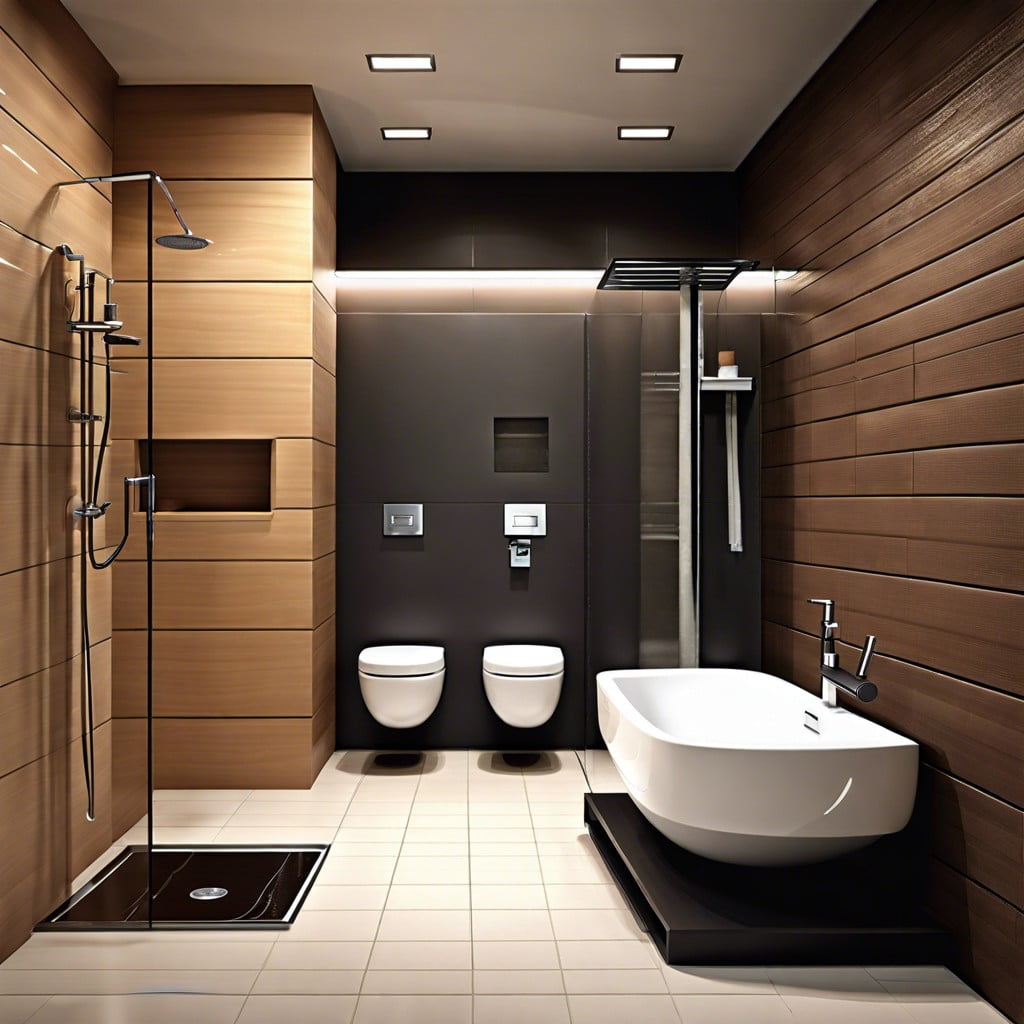Last updated on
Discover the common culprits behind tiny brown bugs in your bathroom and learn how to effectively tackle these uninvited guests.
Key takeaways:
- Tiny brown bugs in bathrooms are often drugstore beetles, foreign grain beetles, or psocids.
- High humidity, leaky pipes, dirt, grime, and personal care products attract these bugs.
- Natural remedies like diatomaceous earth, essential oils, vinegar, and boric acid can help remove bathroom bugs.
- Prevent infestations by maintaining a dry environment, regular cleaning, proper storage, and using natural repellents.
- Call a professional exterminator if home remedies don’t work or if there are signs of a larger infestation, potential structural damage, or health issues.
Identification of Tiny Brown Bugs in Bathroom
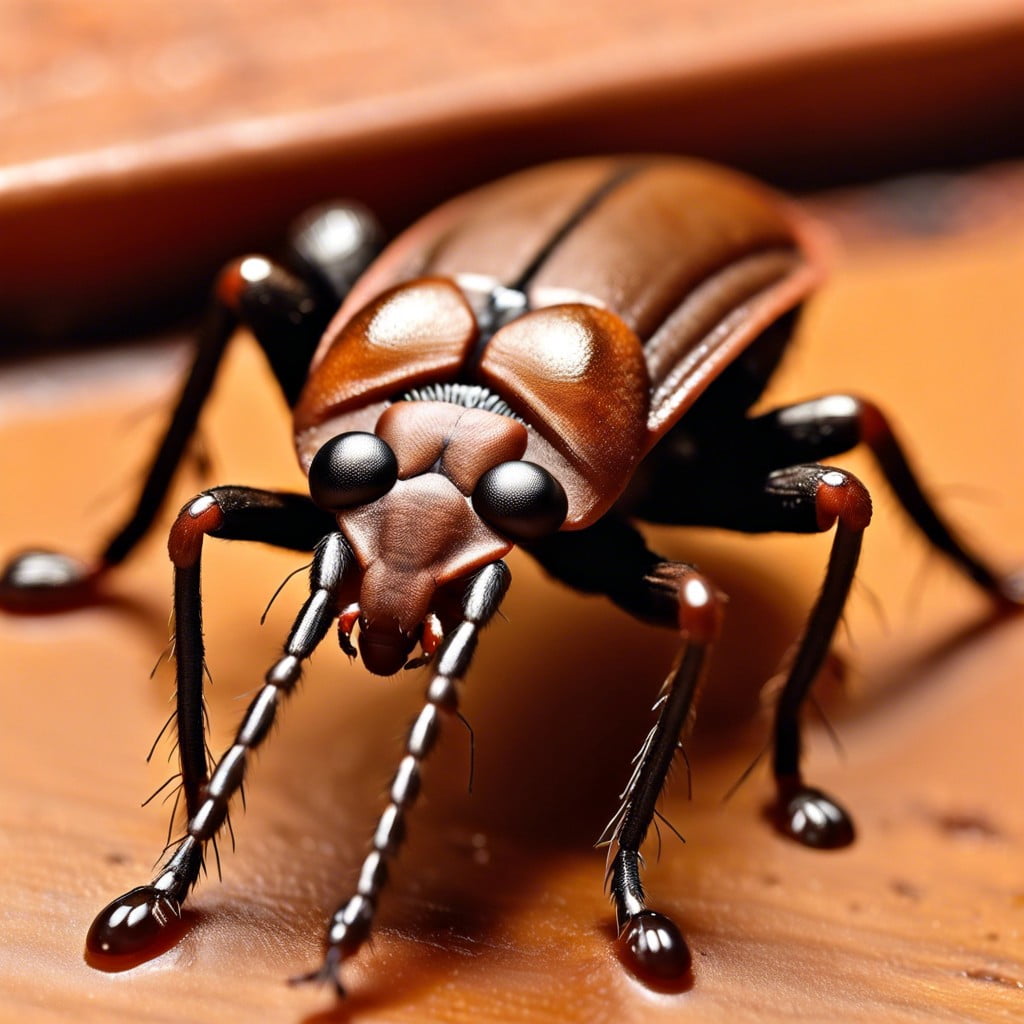
Determining the type of uninvited guests in your bathroom is the first step towards addressing an infestation. These tiny brown bugs often fall into a few common categories: drugstore beetles, foreign grain beetles, and psocids, also known as booklice.
Drugstore beetles are attracted to moisture and can often be found near medicines or damp areas. Their oblong bodies and brown color make them noticeable, even at their small size.
Foreign grain beetles, on the other hand, are usually found in new construction where fungus and mold might be present, a common source of food for them.
Psocids thrive in high humidity and are typically found in moldy areas, feeding on mold spores themselves.
Understanding each bug’s appearance and behavior is crucial; drugstore beetles can fly, grain beetles have a love for fungus, and psocids crave that damp environment. Spot these nuances, and you’re on your way to solving your tiny brown bug mystery.
Reasons for Brown Bugs Appearing in Bathrooms
High humidity levels are a bug’s paradise, especially in bathrooms where steam from showers creates a consistently damp environment. Poor ventilation only exacerbates the problem, failing to cycle out moist air and inviting tiny brown critters to set up camp.
Leaky pipes are another welcome sign for these pests. Even the smallest drip from a faulty faucet can supply enough moisture to sustain a population of unwanted guests.
Dirt and grime are the bug equivalent of a buffet. Because bathrooms are often not as rigorously cleaned as kitchens, accumulations of hair, dead skin, and soap scum offer a veritable feast.
Leftover residue from personal care products also has allure. Scented soaps, lotions, and potions can attract bugs much like flowers attract bees.
Finally, darkness in seldom-used corners or under the sink gives bugs secret hideaways to thrive without disturbance. Regular cleaning and decluttering can disturb their hidden habitats and discourage residency.
Effective Natural Remedies to Remove Bathroom Bugs
Confronted with an infestation of tiny brown bugs, homeowners are often quick to turn to chemical solutions — an approach that’s not always necessary or advisable, especially in the sanctuary of our bathrooms. Nature, in its resourcefulness, provides several robust allies in the fight against these pesky invaders.
Diatomaceous earth, a powdery substance made from the fossilized remains of tiny aquatic organisms, is particularly effective. Sprinkled around the bathroom, it acts as a desiccant, drying out the bugs without the use of harmful toxins.
Essential oils, such as peppermint, tea tree, or eucalyptus, are not only pleasant for humans but act as natural deterrents for bugs. A few drops in a spray bottle filled with water can create an eco-friendly bug repellent; just spray it around the bathroom and particularly in bug-prone areas.
Vinegar, another household staple, can also be weaponized against these tiny pests. Diluted with water, vinegar can clean surfaces while its acidic nature deters bug infestations.
Boric acid, often praised for its efficacy in controlling cockroach populations, can serve as a weapon in your bathroom bug battle. A light sprinkling in corners and crevices can mean the end for these unwelcome critters; just ensure it’s kept away from pets and children.
Lastly, maintaining a clean and dry bathroom is not only good practice but an excellent natural remedy. Eliminating moisture eliminates the environment these bugs need to thrive. Regular cleaning and fixing leaky faucets or pipes can go a long way in preventing bug issues from arising or reoccurring.
Preventive Measures to Keep Bugs Out of Bathrooms
Maintaining a dry environment is a key factor in deterring the invasion of pesky critters. Brown bugs thrive in moisture, so fix any leaks promptly and consider using a dehumidifier to reduce humidity levels. Consistent ventilation also plays a critical role. Open windows or install exhaust fans to circulate air and eliminate excess dampness.
Regular cleaning rituals will be your next line of defense. Wipe down surfaces to clear residue and sweep away potential bug food sources. Pay particular attention to corners and hidden areas where they might congregate.
Storing items properly can mitigate the issue, too. Keep toiletries and towels in closed cabinets or sealed containers. This practice not just tidies up the space but also minimizes shelters for bugs.
Lastly, natural repellents can be quite potent against these invaders. Consider using essential oils like peppermint or eucalyptus as a deterrent. Sprinkling diatomaceous earth along bathroom perimeters forms an effective barrier without resorting to harsh chemicals.
Remember, vigilance and routine are your best tools. Staying one step ahead of brown bugs means creating an environment that is less appealing to them in the first place.
When to Call a Professional Exterminator for Brown Bugs
It’s tempting to tackle a brown bug problem on your own, but there are clear signs when you should defer to professionals. If you find that your home remedies and preventive strategies aren’t making a dent in the population, it’s time for expert help. Also, if you’re seeing brown bugs in large numbers or frequently after cleaning, they might be part of a larger infestation.
Consider the potential for damage. Certain pests, like termites, can be mistaken for “harmless” brown bugs but cause structural damage to your home. If you suspect the invaders might be of this variety, immediate professional assessment is critical.
Health is another factor. If anyone in your household is experiencing allergic reactions or asthma attacks, and you suspect it’s due to the presence of these pests, call an exterminator. Pest control professionals can also provide peace of mind by accurately identifying the bugs and ensuring they’re eradicated safely, effectively, and for the long term.
Recap
